Everything You Need to Know About Grocery Flowers, According to a Former Supermarket Florist
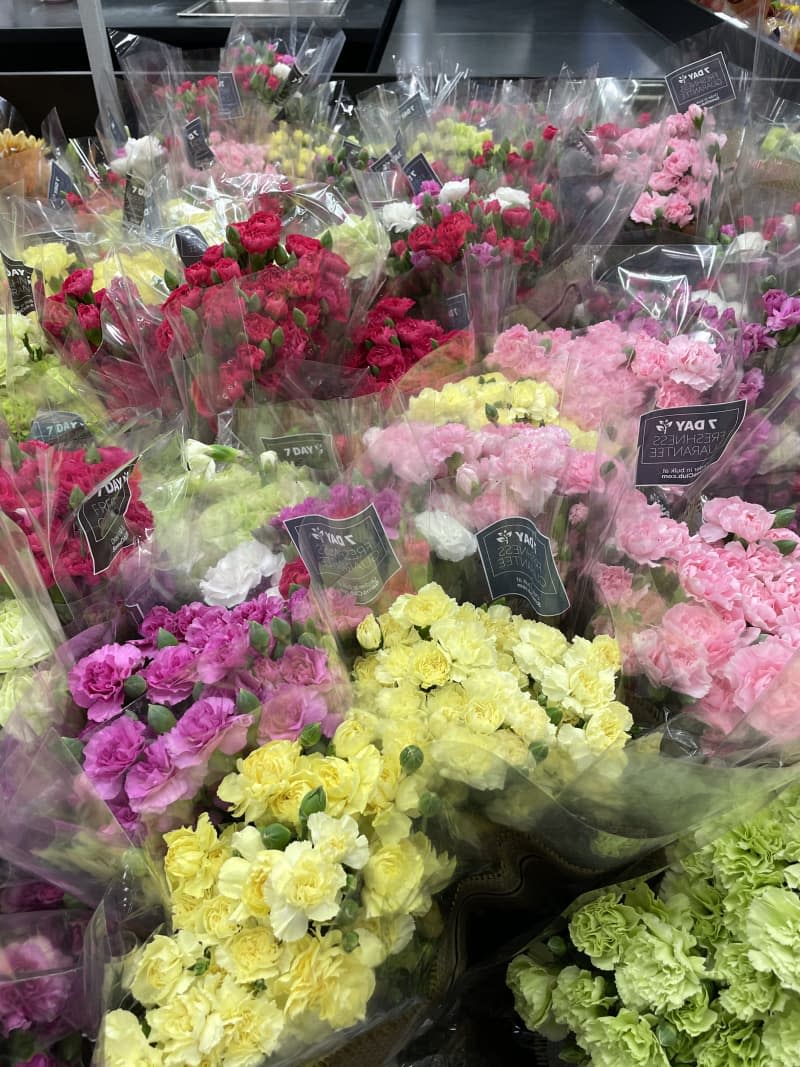
During my last three years of college, I had what I thought was one of the coolest jobs a 20-something could have: I got to be around flowers all day long at the grocery store. Despite the fact that I had zero experience (but was creative at heart), I had scored a job as a florist at a nearby supermarket. It was fun! And I learned so much!
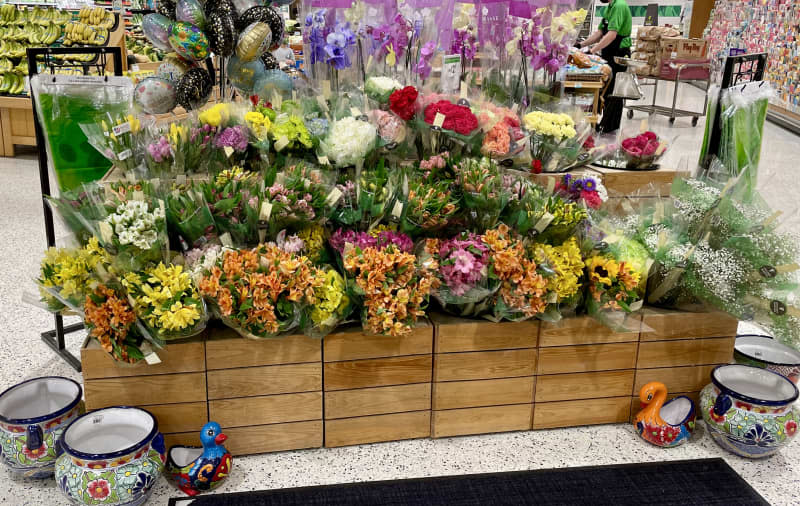
In addition to figuring out how much work it takes to be a florist, I banked a ton of lessons on shopping and caring for plants, which I’ll carry with me for the rest of my life. Here’s what I would tell any shopper who is curious (or skeptical!) about buying flowers at the supermarket.
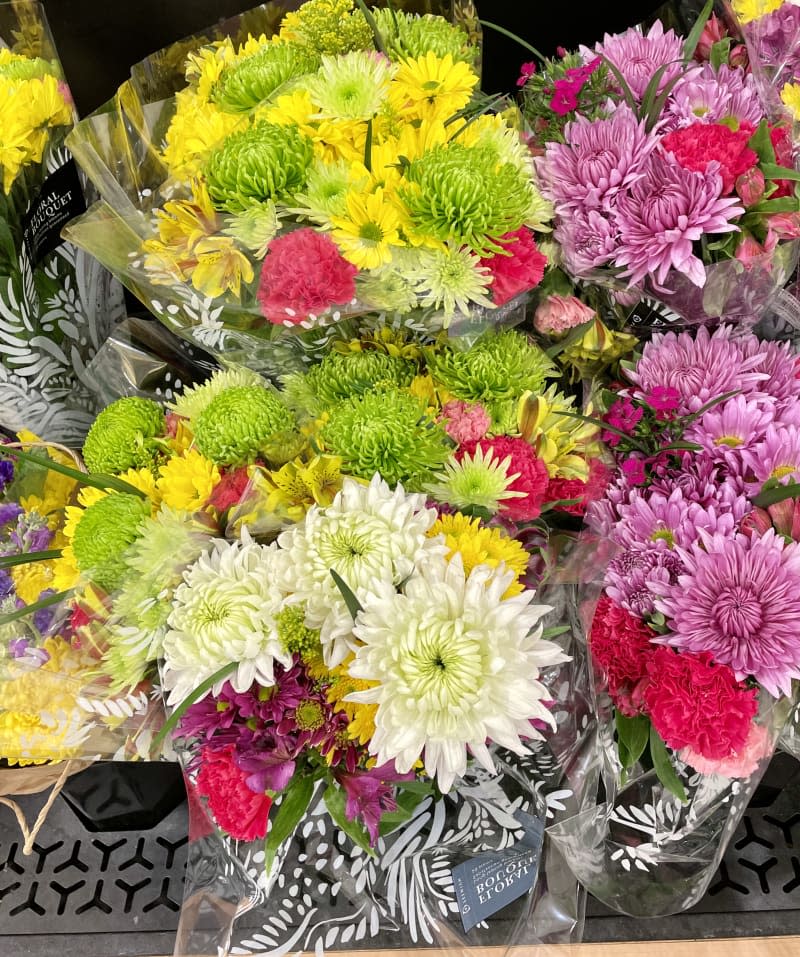
What You Should Know Before Heading to the Grocery Store
1. The flowers are as fresh as the ones at the florist.
The flowers my supermarket carried were delivered weekly (on huge delivery trucks! In a big cooler!) within days of being picked. Some grocers, like Trader Joe’s, get flower deliveries every single morning. I have since learned that tons of other supermarkets, as well as professional florists, use the same wholesale vendors. The key thing to note here is that supermarkets buy wholesale flowers in very large quantities.
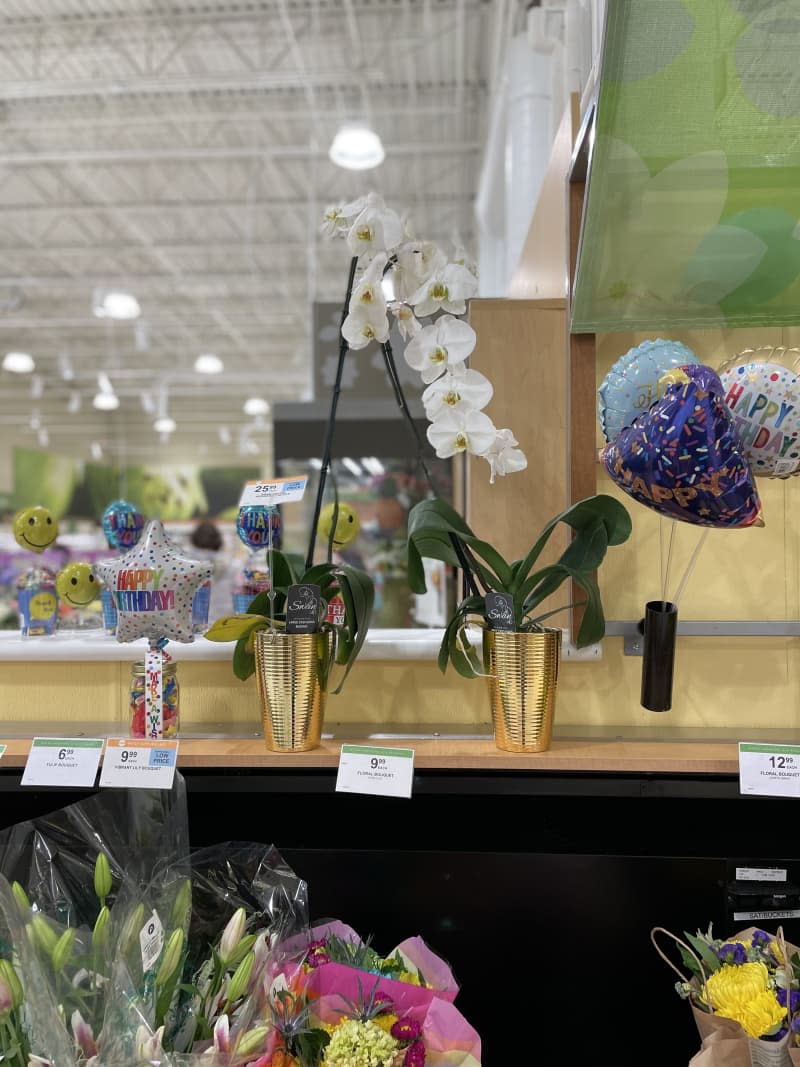
2. The house plants are pretty great (and affordable) too.
Small and large potted house plants are much cheaper to buy at the grocery store than anywhere else. And they’re often the exact same plants sold everywhere else! This is because, as mentioned above, supermarkets simply buy large quantities from wholesalers. Look for varieties such as Devil’s Ivy (pothos), Peace Lilies (Spath), ferns, English Ivy, succulents, and snake plants.
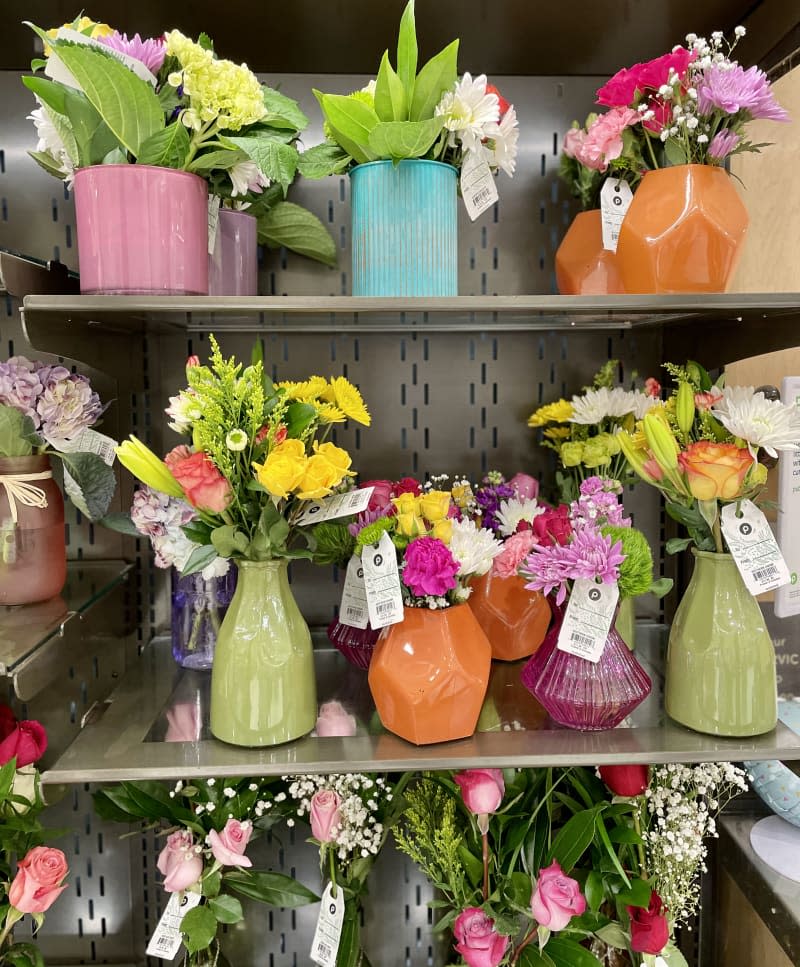
3. Bouquets and custom arrangements can be personalized if you ask in advance.
Don’t hesitate to call your local supermarket florist if you need something special. Whether it’s for the prom, a gift for someone at the hospital, or a “just because” gift, supermarket florists will accept orders for fresh flower arrangements. Another fun fact: Grocery store florists can add special touches like balloons or stuffed animals for a fee (if you ask). You’ll likely pay half the price of what you would at a regular florist for a customized order.
How to Pick Out the Best Blooms (and Keep Them Fresh)
One of the most common mistakes I saw customers make was buying fresh bouquets that had already fully opened. (PSA: Don’t do that!) If you’re purchasing, say, roses or tulips, choose ones that are still closed and have tight buds. If you purchase them at this stage, they will last up to two weeks, but if you buy them fully open, they will shed their petals and brown much faster.
Wonder which kinds of blooms to look for? Some of the best grocery flowers (both in terms of quality and lifespan) to look for include tulips, hydrangeas, carnations, lilies, and roses. And if you want to keep them fresh for as long as possible, put them in the fridge.
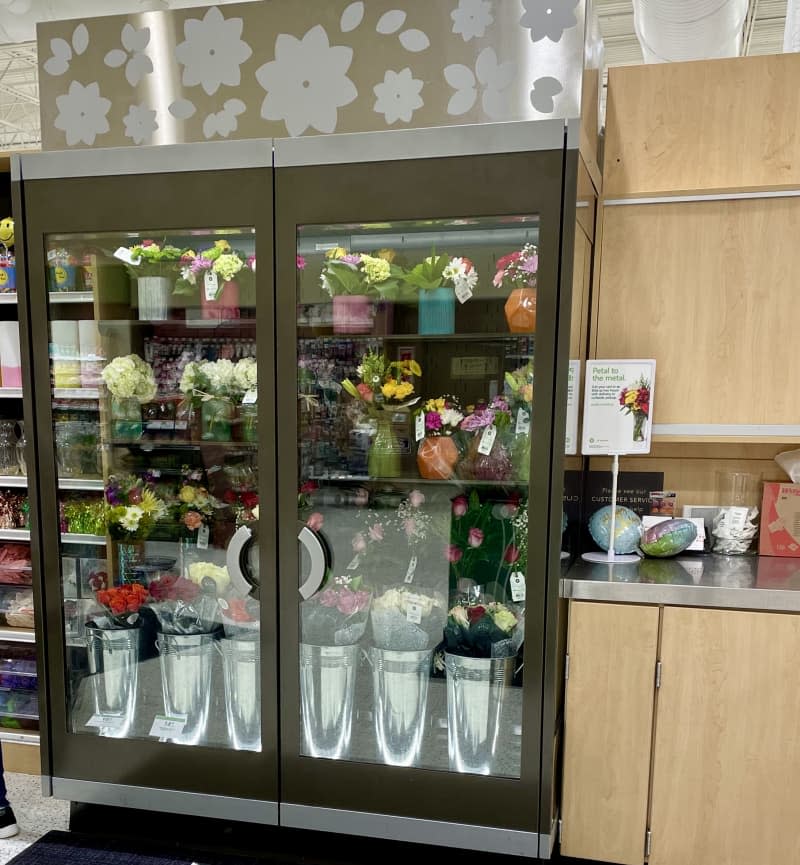
The flowers sold at the supermarket are kept in a huge cooler in the back (our flowers shared space in the walk-in dairy cooler!) because they keep longer and stay much fresher when stored this way. These cold flowers are typically put out on display daily by a florist or supermarket clerk, and changed out every few days so that shoppers can choose from the freshest options. My point: If you have room in your fridge (or a spare!) at night, and want your fresh-cut flowers to last even longer, store them in there.
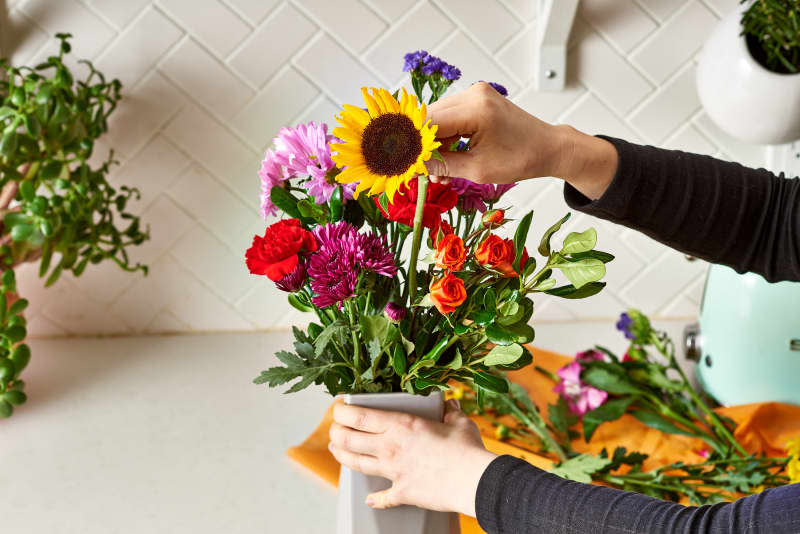
How to Arrange Your Bunches into a Beautiful Bouquet
Grocery stores supply so many ideas (and supplies) on how to elevate those pre-arranged bouquets, including vases, foam blocks, and other floral arranging supplies so you can customize your bunches just how you like it at home. So if you’d rather DIY your arrangements with floral wire or moss, or you want to buy a vase or water-filled bucket without making an extra trip, simply ask the supermarket florist. Even if you don’t see it on display, the florists keep most of their floral supplies out of sight in the back of the floor. Just ask and they’ll likely sell it to you.
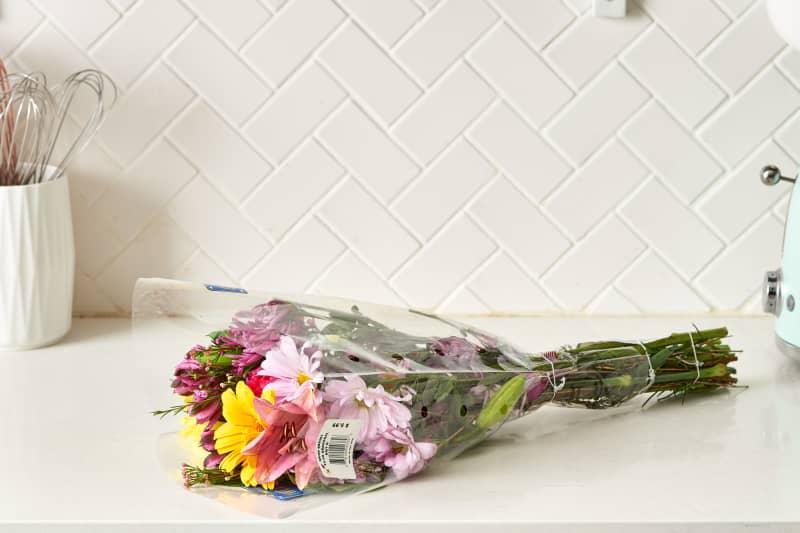
While it might be immediately satisfying to pop your bouquet in your favorite vase once you get home, there are a few ways you can keep them truly looking their best.
First, trim off about an inch of the stem on an angle to expose more of the stem to the water.
Then, make sure you choose a vase that’s taller than it is wide (so that you don’t need too many blooms to make it appear full) and fill it with room-temperature water.
As for arranging, start small (with greenery such as eucalyptus or even something from your yard), then work your way to adding your focal flowers (say, like peonies, tulips, roses, and ranunculus), before topping it all off with your filler flowers (such as baby’s breath or carnations).
When in doubt, go for bunches over pre-arranged bouquets (unless those pre-arranged have some overlap in types of blooms) so you can maintain a balance to your creation.
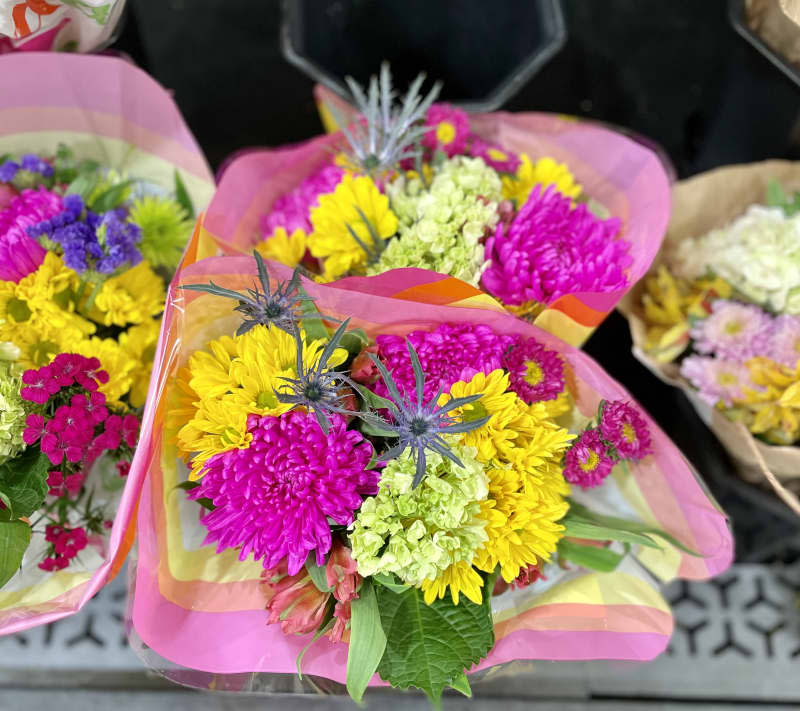
Finally, don’t leave the store without asking for care instructions. I can’t tell you how many people came back to the store to say they “ruined” their plants when really, all they did was over-water them or leave them in a dark room. Most potted plants only need to be watered once a week, max. (Yellow leaves mean that your plant is drowning in too much water.) Fresh bouquets only need to have the water changed once per week, or when they start to brown.
What plants and fresh flowers need just as much as water is good light, so be sure to give them enough of it! Ask the supermarket florist how to care for whatever ends up in your cart. They’ll be happy to help you!
Do you buy flowers at the supermarket? What’s your favorite store to buy them from?

